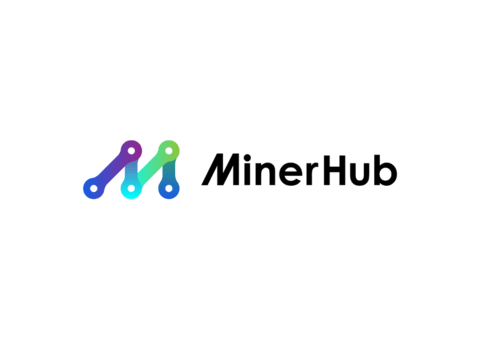Ethereum 2.0 is about to start the transition, and these issues are of concern to everyone
Ethereum developers will deploy the much-anticipated ethereum upgrade (Istanbul hard fork) on December 4th. Developers promise the Istanbul upgrade will make the ethereum network faster, cheaper and more efficient.
 Produced | Mine Vision (ID: minersight)
Produced | Mine Vision (ID: minersight)
Produced | Mine Vision (ID: minersight)
Original author | Kieran Smith; Starke_kunst
Ethereum has come under fire for months as developers tout a promising "world computer" and then fail to deliver market-ready applications.
But all this may turn around in the near future.
In two tweets in early November, ethereum core developer Peter Szilágyi stated that the long-awaited Istanbul hard fork will begin with block 9069000, which is expected to be mined on December 4 .
The network upgrade included in Istanbul is a key milestone in ethereum's scalability blueprint, which promises to make applying the blockchain faster and cheaper without sacrificing the principles of decentralization.
secondary title
1 The road to Ethereum 2.0
The Istanbul hard fork is the first of two major network upgrades planned for the next six months that will bring it finally to ethereum 2.0 (also known as the serenity phase).
These upgrades include 14 EIPs (Ethereum Improvement Proposals), down from the original 38. Among them, 6 proposals will be implemented in the first upgrade of Istanbul on December 4th, and the remaining 8 proposals still need to be discussed and considered by the core developers, and will be reserved for the second upgrade - Berlin, which is scheduled to be launched on January 1, 2020. month implementation.
After the upgrade is completed, it is expected that the speed of Ethereum will be greatly accelerated. Unlike the previous POW, it will rely on the consensus algorithm of PoS to verify transactions.
Istanbul lays the groundwork for this transition with several new core features.
secondary title
2 highly controversial proposals
EIP 1884 is the most controversial adjustment, which will make calling data on Ethereum more expensive than before.
The fee increase is intended to protect the blockchain from potential transaction spam attacks that could overload the network and cause delays for regular users. However, some Dapp developers are still unconvinced, saying that it is likely to usher in not only the increase of transaction costs, but also other unnecessary confusion. Decentralized governance platform Aragon said the upgrade was an "unfortunate trade-off" that would break 680 smart contracts on the platform.

At the recent DevCon conference in Osaka, ethereum founder Vitalik responded to these concerns with a blog post.
V God wrote in this blog post: "If you are a developer, you can eliminate the most interference caused by changes in GAS costs by not writing applications that take up a lot of storage space. The total storage space + contract + contract code accessed in the transaction, and ensure that it will not be overloaded."

Some proposals have been generally welcomed, such as EIP 1108, which involves repricing pre-compiled elliptic curve algorithms on Ethereum. This update aims to improve Ethereum's scalability and privacy protocol by optimizing GAS payments, and will enable ZK-SNARKs and other privacy applications such as Zether and AZTEC) are cheaper to use on Ethereum.
Of course, the most controversial upgrade proposal is still reserved for the latter chapter of Istanbul-Berlin.
The Berlin upgrade includes EIP 1057, also known as ProgPoW, which will make Ethereum more ASIC-resistant by replacing the proof-of-work function Ethash algorithm.
This change may have been well-received among large GPU mining farms, but it also raised many questions about why the proof-of-work algorithm was changed just before the planned transition to PoS proof-of-stake.
There are of course other concerns, such as composability, which Vitalik described as "the ability to easily talk between different applications," and potential security concerns around building a bridge between two blockchains, which was discussed in the annual development report. At the member DevCon conference, God V wrote four blog posts to respond to these concerns one by one.
Vitalik mentioned that composability will remain intact "to a large extent", and while a one-way security bridge between two blockchains is possible, the complexity of a two-way bridge makes it unlikely to be developed because it Potentially pose a security risk.
secondary title

3 Transition to 2.0, what happens
Obviously, this DevCon in Osaka attracted the attention of people in the currency circle, because too many concerns require a reassuring response, and too many questions require a clear answer. In addition to the ones mentioned above, I also picked out the following points of concern:
1) Time-consuming transition to Ethereum 2.0
2) What will happen to the current network after the transition to Ethereum 2.0
The answers to these questions can also be found in the V God blog post mentioned above.
“The ETH1 chain technically still exists, but is worthless; it will eventually die when the hard ice age comes,” he wrote.

According to V God, the transition to Ethereum 2.0 only takes 6 hours, while the actual implementation may take two years.
During this time, the Ethereum Foundation will be working on the implementation of phases 0-2. It will start with the introduction of the proof-of-stake algorithm, and the ETH1 network will work as before, but funds cannot be withdrawn at this stage.
For most users, this process happens in the background, the difference is that each new transaction will add evidence data, which will be enough to allow them to be processed on the ETH2 network.
"You fall asleep and wake up, and the transition is complete." V God said.

The amount of change and chaos you experience is actually quite limited. Existing applications will all work as usual. All account balances, contract codes and contract storage (including ERC20 balances, active CDPs, etc.) will be carried forward.
From a user's perspective, Ethereum will not "feel" much different before and after the transition (except after the transition, the network has improved smoothness due to proof-of-stake and EIP 1559). While very different code paths are used to package and propagate transactions, the functionality provided will be the same.
Vitalik also provided an interactive example - an updated Ethereum network for Maker DAO service users. You can interact with the CDP and clear by sending transactions as before, but your client code will also see that you are in a post-transition and add proof data to the transaction and send it to the eth2 network instead of the eth1 network.
In short, there will be no hard forks, no community splits or any distress. Ethereum 1.0 will live "inside" the 2.0 ecosystem for a while.
However, at the end of the transition, the ETH1 blockchain technically still exists, but is worthless; when the difficult ice age comes, it will eventually die.
Original link:
Original link:
——–END——–



